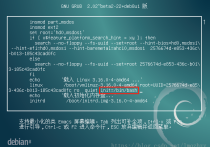一、Frp简介
frp 是一个专注于内网穿透的高性能的反向代理应用,支持 TCP、UDP、HTTP、HTTPS 等多种协议,且支持 P2P 通信。可以将内网服务以安全、便捷的方式通过具有公网 IP 节点的中转暴露到公网。
frp 项目地址: https://github.com/fatedier/frp
二、Frp特性
通过在具有公网 IP 的节点上部署 frp 服务端,可以轻松地将内网服务穿透到公网,同时提供诸多专业的功能特性,这包括:
客户端服务端通信支持 TCP、QUIC、KCP 以及 Websocket 等多种协议。
采用 TCP 连接流式复用,在单个连接间承载更多请求,节省连接建立时间,降低请求延迟。
代理组间的负载均衡。
端口复用,多个服务通过同一个服务端端口暴露。
支持 P2P 通信,流量不经过服务器中转,充分利用带宽资源。
多个原生支持的客户端插件(静态文件查看,HTTPS/HTTP 协议转换,HTTP、SOCK5 代理等),便于独立使用 frp 客户端完成某些工作。
高度扩展性的服务端插件系统,易于结合自身需求进行功能扩展。
服务端和客户端 UI 页面。
三、架构与工作原理
frp 主要由两个组件组成:客户端(frpc) 和 服务端(frps)。通常情况下,服务端部署在具有公网 IP 地址的机器上,而客户端部署在需要穿透的内网服务所在的机器上。
由于内网服务缺乏公网 IP 地址,因此无法直接被非局域网内的用户访问。用户通过访问服务端的 frps,frp 负责根据请求的端口或其他信息将请求路由到相应的内网机器,从而实现通信。

四、相关概念
4.1、代理
在 frp 中,一个代理对应一个需要公开访问的内网服务。一个客户端可以同时配置多个代理,以满足不同的需求。
4.2、代理类型
frp 支持多种代理类型,以适应不同的使用场景。以下是一些常见的代理类型:
TCP:提供纯粹的 TCP 端口映射,使服务端能够根据不同的端口将请求路由到不同的内网服务。
UDP:提供纯粹的 UDP 端口映射,与 TCP 代理类似,但用于 UDP 流量。
HTTP:专为 HTTP 应用设计,支持修改 Host Header 和增加鉴权等额外功能。
HTTPS:类似于 HTTP 代理,但专门用于处理 HTTPS 流量。
STCP:提供安全的 TCP 内网代理,要求在被访问者和访问者的机器上都部署 frpc,不需要在服务端暴露端口。
SUDP:提供安全的 UDP 内网代理,与 STCP 类似,需要在被访问者和访问者的机器上都部署 frpc,不需要在服务端暴露端口。
XTCP:点对点内网穿透代理,与 STCP 类似,但流量不需要经过服务器中转。
TCPMUX:支持服务端 TCP 端口的多路复用,允许通过同一端口访问不同的内网服务。
每种代理类型适用于不同的使用情境,您可以根据需求选择合适的代理类型来配置 frp。
五、安装
5.1、需求描述
公司有一台内网服务器A和一台具有公网IP的云服务器B ,内网服务器上有一个服务,如jenkins服务,需要将内网jenkins服务发布到公网进行访问,即通过云服务器B的公网IP进行访问。
5.2、下载安装包
从官方GitHub的Release页面下载最新版的二进制文件:https://github.com/fatedier/frp/releases ,截至目前最新版为:v0.54.0,linux版下载地址:https://github.com/fatedier/frp/releases/download/v0.54.0/frp_0.54.0_linux_amd64.tar.gz
5.3、公网服务器部署frp
(1) 上传安装包并解压
tar -xf frp_0.54.0_linux_amd64.tar.gzmv frp_0.54.0_linux_amd64 frpcd frp123
(2) 修改配置
vim frps.toml#服务绑定的IP与端口bindAddr = "0.0.0.0"bindPort = 7000#web dashboard配置webServer.addr = "0.0.0.0"webServer.port = 7500webServer.user = "admin"webServer.password = "admin"#启用prometheus监控指标enablePrometheus = true#token权限验证,需与客户端配置一致auth.method = "token"auth.token = "123456"#日志配置log.to = "/app/frp/logs/frps.log"log.level = "info"log.maxDays = 3123456789101112131415161718
(3) 创建日志目录
mkdir /app/frp/logs1
(4) 启动服务
#命令行方式启动./frps -c ./frps.toml#后台启动nohup ./frps -c ./frps.toml &> /dev/null &#使用systemd方式启动##准备启动文件vim /etc/systemd/system/frps.service[Unit]# 服务名称,可自定义Description = frp serverAfter = network.target syslog.targetWants = network.target[Service]Type = simple# 启动frps的命令,需修改为您的frps的安装路径ExecStart = /app/frp/frps -c /app/frp/frps.toml[Install]WantedBy = multi-user.target##启动服务systemctl daemon-reloadsystemctl start frps12345678910111213141516171819202122232425
5.4、内网服务器部署frp
(1) 上传安装包并解压
tar -xf frp_0.54.0_linux_amd64.tar.gzmv frp_0.54.0_linux_amd64 frpcd frp123
(2) 创建代理配置目录与日志存储目录
mkdir logs conf.d1
(3) 修改配置
#注意是frpc.toml文件,服务器是frps.tomlvim frpc.toml#配置公网服务器上frp服务的IP与端口serverAddr = "x.x.x.x"serverPort = 7000#web dashboard配置webServer.addr = "0.0.0.0"webServer.port = 7400webServer.user = "admin"webServer.password = "admin"#日志配置log.to = "/app/frp/logs/frpc.log"log.level = "info"log.maxDays = 3#token权限验证,需与服务端配置一致auth.method = "token"auth.token = "123456"#代理配置,这里使用引用文件的方式includes = ["./conf.d/*.toml"]#保存以上配置,然后添加代理配置vim ./conf.d/jenkins.toml[[proxies]]name = "jenkins" #名称type = "tcp" #代理类型localIP = "127.0.0.1" #本地IPlocalPort = 8000 #内网服务监听的端口remotePort = 8500 #需要在公网服务器上监听的端口12345678910111213141516171819202122232425262728
(4) 启动服务
#命令行方式启动./frpc -c ./frpc.toml#后台启动nohup ./frpc -c ./frpc.toml &> /dev/null &#使用systemd方式启动##准备启动文件vim /etc/systemd/system/frpc.service[Unit]# 服务名称,可自定义Description = frp client
After = network.target syslog.target
Wants = network.target[Service]Type = simple# 启动frpc的命令,需修改为您的frpc的安装路径ExecStart = /app/frp/frpc -c /app/frp/frpc.toml[Install]WantedBy = multi-user.target##启动服务systemctl daemon-reload
systemctl start frpc12345678910111213141516171819202122232425
5.5、访问测试
在浏览器使用公网服务器端使用:http://<公网IP>:8500,即可访问到内网的jenkins服务,注意,如果公网服务器有安全组,记得放开相应的端口。
公网服务器web界面:http://<公网IP>:7500
公网服务器监控指标:http://<公网IP>:7500/metrics
六、附录:
从官网下载了服务端与客户端的全配置文件,仅供参考
6.1、服务端全配置文件 frps_full_example.toml
# This configuration file is for reference only. Please do not use this configuration directly to run the program as it may have various issues.
# A literal address or host name for IPv6 must be enclosed
# in square brackets, as in "[::1]:80", "[ipv6-host]:http" or "[ipv6-host%zone]:80"
# For single "bindAddr" field, no need square brackets, like `bindAddr = "::"`.
bindAddr = "0.0.0.0"
bindPort = 7000
# udp port used for kcp protocol, it can be same with 'bindPort'.
# if not set, kcp is disabled in frps.
kcpBindPort = 7000
# udp port used for quic protocol.
# if not set, quic is disabled in frps.
# quicBindPort = 7002
# Specify which address proxy will listen for, default value is same with bindAddr
# proxyBindAddr = "127.0.0.1"
# quic protocol options
# transport.quic.keepalivePeriod = 10
# transport.quic.maxIdleTimeout = 30
# transport.quic.maxIncomingStreams = 100000
# Heartbeat configure, it's not recommended to modify the default value
# The default value of heartbeatTimeout is 90. Set negative value to disable it.
# transport.heartbeatTimeout = 90
# Pool count in each proxy will keep no more than maxPoolCount.
transport.maxPoolCount = 5
# If tcp stream multiplexing is used, default is true
# transport.tcpMux = true
# Specify keep alive interval for tcp mux.
# only valid if tcpMux is true.
# transport.tcpMuxKeepaliveInterval = 60
# tcpKeepalive specifies the interval between keep-alive probes for an active network connection between frpc and frps.
# If negative, keep-alive probes are disabled.
# transport.tcpKeepalive = 7200
# transport.tls.force specifies whether to only accept TLS-encrypted connections. By default, the value is false.
transport.tls.force = false
# transport.tls.certFile = "server.crt"
# transport.tls.keyFile = "server.key"
# transport.tls.trustedCaFile = "ca.crt"
# If you want to support virtual host, you must set the http port for listening (optional)
# Note: http port and https port can be same with bindPort
vhostHTTPPort = 80
vhostHTTPSPort = 443
# Response header timeout(seconds) for vhost http server, default is 60s
# vhostHTTPTimeout = 60
# tcpmuxHTTPConnectPort specifies the port that the server listens for TCP
# HTTP CONNECT requests. If the value is 0, the server will not multiplex TCP
# requests on one single port. If it's not - it will listen on this value for
# HTTP CONNECT requests. By default, this value is 0.
# tcpmuxHTTPConnectPort = 1337
# If tcpmuxPassthrough is true, frps won't do any update on traffic.
# tcpmuxPassthrough = false
# Configure the web server to enable the dashboard for frps.
# dashboard is available only if webServer.port is set.
webServer.addr = "127.0.0.1"
webServer.port = 7500
webServer.user = "admin"
webServer.password = "admin"
# webServer.tls.certFile = "server.crt"
# webServer.tls.keyFile = "server.key"
# dashboard assets directory(only for debug mode)
# webServer.assetsDir = "./static"
# Enable golang pprof handlers in dashboard listener.
# Dashboard port must be set first
webServer.pprofEnable = false
# enablePrometheus will export prometheus metrics on webServer in /metrics api.
enablePrometheus = true
# console or real logFile path like ./frps.log
log.to = "./frps.log"
# trace, debug, info, warn, error
log.level = "info"
log.maxDays = 3
# disable log colors when log.to is console, default is false
log.disablePrintColor = false
# DetailedErrorsToClient defines whether to send the specific error (with debug info) to frpc. By default, this value is true.
detailedErrorsToClient = true
# auth.method specifies what authentication method to use authenticate frpc with frps.
# If "token" is specified - token will be read into login message.
# If "oidc" is specified - OIDC (Open ID Connect) token will be issued using OIDC settings. By default, this value is "token".
auth.method = "token"
# auth.additionalScopes specifies additional scopes to include authentication information.
# Optional values are HeartBeats, NewWorkConns.
# auth.additionalScopes = ["HeartBeats", "NewWorkConns"]
# auth token
auth.token = "12345678"
# oidc issuer specifies the issuer to verify OIDC tokens with.
auth.oidc.issuer = ""
# oidc audience specifies the audience OIDC tokens should contain when validated.
auth.oidc.audience = ""
# oidc skipExpiryCheck specifies whether to skip checking if the OIDC token is expired.
auth.oidc.skipExpiryCheck = false
# oidc skipIssuerCheck specifies whether to skip checking if the OIDC token's issuer claim matches the issuer specified in OidcIssuer.
auth.oidc.skipIssuerCheck = false
# userConnTimeout specifies the maximum time to wait for a work connection.
# userConnTimeout = 10
# Only allow frpc to bind ports you list. By default, there won't be any limit.
allowPorts = [
{ start = 2000, end = 3000 },
{ single = 3001 },
{ single = 3003 },
{ start = 4000, end = 50000 }
]
# Max ports can be used for each client, default value is 0 means no limit
maxPortsPerClient = 0
# If subDomainHost is not empty, you can set subdomain when type is http or https in frpc's configure file
# When subdomain is test, the host used by routing is test.frps.com
subDomainHost = "frps.com"
# custom 404 page for HTTP requests
# custom404Page = "/path/to/404.html"
# specify udp packet size, unit is byte. If not set, the default value is 1500.
# This parameter should be same between client and server.
# It affects the udp and sudp proxy.
udpPacketSize = 1500
# Retention time for NAT hole punching strategy data.
natholeAnalysisDataReserveHours = 168
# ssh tunnel gateway
# If you want to enable this feature, the bindPort parameter is required, while others are optional.
# By default, this feature is disabled. It will be enabled if bindPort is greater than 0.
# sshTunnelGateway.bindPort = 2200
# sshTunnelGateway.privateKeyFile = "/home/frp-user/.ssh/id_rsa"
# sshTunnelGateway.autoGenPrivateKeyPath = ""
# sshTunnelGateway.authorizedKeysFile = "/home/frp-user/.ssh/authorized_keys"
[[httpPlugins]]
name = "user-manager"
addr = "127.0.0.1:9000"
path = "/handler"
ops = ["Login"]
[[httpPlugins]]
name = "port-manager"
addr = "127.0.0.1:9001"
path = "/handler"
ops = ["NewProxy"]1234567891011121314151617181920212223242526272829303132333435363738394041424344454647484950515253545556575859606162636465666768697071727374757677787980818283848586878889909192939495969798991001011021031041051061071081091101111121131141151161171181191201211221231241251261271281291301311321331341351361371381391401411421431441451461471481491501511521531541551561571581591601611621631646.2、客户端全配置文件 frpc_full_example.toml
# This configuration file is for reference only. Please do not use this configuration directly to run the program as it may have various issues.
# your proxy name will be changed to {user}.{proxy}
user = "your_name"
# A literal address or host name for IPv6 must be enclosed
# in square brackets, as in "[::1]:80", "[ipv6-host]:http" or "[ipv6-host%zone]:80"
# For single serverAddr field, no need square brackets, like serverAddr = "::".
serverAddr = "0.0.0.0"
serverPort = 7000
# STUN server to help penetrate NAT hole.
# natHoleStunServer = "stun.easyvoip.com:3478"
# Decide if exit program when first login failed, otherwise continuous relogin to frps
# default is true
loginFailExit = true
# console or real logFile path like ./frpc.log
log.to = "./frpc.log"
# trace, debug, info, warn, error
log.level = "info"
log.maxDays = 3
# disable log colors when log.to is console, default is false
log.disablePrintColor = false
auth.method = "token"
# auth.additionalScopes specifies additional scopes to include authentication information.
# Optional values are HeartBeats, NewWorkConns.
# auth.additionalScopes = ["HeartBeats", "NewWorkConns"]
# auth token
auth.token = "12345678"
# oidc.clientID specifies the client ID to use to get a token in OIDC authentication.
# auth.oidc.clientID = ""
# oidc.clientSecret specifies the client secret to use to get a token in OIDC authentication.
# auth.oidc.clientSecret = ""
# oidc.audience specifies the audience of the token in OIDC authentication.
# auth.oidc.audience = ""
# oidc.scope specifies the permissions of the token in OIDC authentication if AuthenticationMethod == "oidc". By default, this value is "".
# auth.oidc.scope = ""
# oidc.tokenEndpointURL specifies the URL which implements OIDC Token Endpoint.
# It will be used to get an OIDC token.
# auth.oidc.tokenEndpointURL = ""
# oidc.additionalEndpointParams specifies additional parameters to be sent to the OIDC Token Endpoint.
# For example, if you want to specify the "audience" parameter, you can set as follow.
# frp will add "audience=<value>" "var1=<value>" to the additional parameters.
# auth.oidc.additionalEndpointParams.audience = "https://dev.auth.com/api/v2/"
# auth.oidc.additionalEndpointParams.var1 = "foobar"
# Set admin address for control frpc's action by http api such as reload
webServer.addr = "127.0.0.1"
webServer.port = 7400
webServer.user = "admin"
webServer.password = "admin"
# Admin assets directory. By default, these assets are bundled with frpc.
# webServer.assetsDir = "./static"
# Enable golang pprof handlers in admin listener.
webServer.pprofEnable = false
# The maximum amount of time a dial to server will wait for a connect to complete. Default value is 10 seconds.
# transport.dialServerTimeout = 10
# dialServerKeepalive specifies enabled.
# Since v0.50.0, the default value has beenthe interval between keep-alive probes for an active network connection between frpc and frps.
# If negative, keep-alive probes are disabled.
# transport.dialServerKeepalive = 7200
# connections will be established in advance, default value is zero
transport.poolCount = 5
# If tcp stream multiplexing is used, default is true, it must be same with frps
# transport.tcpMux = true
# Specify keep alive interval for tcp mux.
# only valid if tcpMux is enabled.
# transport.tcpMuxKeepaliveInterval = 60
# Communication protocol used to connect to server
# supports tcp, kcp, quic, websocket and wss now, default is tcp
transport.protocol = "tcp"
# set client binding ip when connect server, default is empty.
# only when protocol = tcp or websocket, the value will be used.
transport.connectServerLocalIP = "0.0.0.0"
# if you want to connect frps by http proxy or socks5 proxy or ntlm proxy, you can set proxyURL here or in global environment variables
# it only works when protocol is tcp
# transport.proxyURL = "http://user:passwd@192.168.1.128:8080"
# transport.proxyURL = "socks5://user:passwd@192.168.1.128:1080"
# transport.proxyURL = "ntlm://user:passwd@192.168.1.128:2080"
# quic protocol options
# transport.quic.keepalivePeriod = 10
# transport.quic.maxIdleTimeout = 30
# transport.quic.maxIncomingStreams = 100000
# If tls.enable is true, frpc will connect frps by tls.
# Since v0.50.0, the default value has been changed to true, and tls is enabled by default.
transport.tls.enable = true
# transport.tls.certFile = "client.crt"
# transport.tls.keyFile = "client.key"
# transport.tls.trustedCaFile = "ca.crt"
# transport.tls.serverName = "example.com"
# If the disableCustomTLSFirstByte is set to false, frpc will establish a connection with frps using the
# first custom byte when tls is changed to true, and the first custom byte is disabled by default.
# transport.tls.disableCustomTLSFirstByte = true
# Heartbeat configure, it's not recommended to modify the default value.
# The default value of heartbeatInterval is 10 and heartbeatTimeout is 90. Set negative value
# to disable it.
# transport.heartbeatInterval = 30
# transport.heartbeatTimeout = 90
# Specify a dns server, so frpc will use this instead of default one
# dnsServer = "8.8.8.8"
# Proxy names you want to start.
# Default is empty, means all proxies.
# start = ["ssh", "dns"]
# Specify udp packet size, unit is byte. If not set, the default value is 1500.
# This parameter should be same between client and server.
# It affects the udp and sudp proxy.
udpPacketSize = 1500
# Additional metadatas for client.
metadatas.var1 = "abc"
metadatas.var2 = "123"
# Include other config files for proxies.
# includes = ["./confd/*.ini"]
[[proxies]]
# 'ssh' is the unique proxy name
# If global user is not empty, it will be changed to {user}.{proxy} such as 'your_name.ssh'
name = "ssh"
type = "tcp"
localIP = "127.0.0.1"
localPort = 22
# Limit bandwidth for this proxy, unit is KB and MB
transport.bandwidthLimit = "1MB"
# Where to limit bandwidth, can be 'client' or 'server', default is 'client'
transport.bandwidthLimitMode = "client"
# If true, traffic of this proxy will be encrypted, default is false
transport.useEncryption = false
# If true, traffic will be compressed
transport.useCompression = false
# Remote port listen by frps
remotePort = 6001
# frps will load balancing connections for proxies in same group
loadBalancer.group = "test_group"
# group should have same group key
loadBalancer.groupKey = "123456"
# Enable health check for the backend service, it supports 'tcp' and 'http' now.
# frpc will connect local service's port to detect it's healthy status
healthCheck.type = "tcp"
# Health check connection timeout
healthCheck.timeoutSeconds = 3
# If continuous failed in 3 times, the proxy will be removed from frps
healthCheck.maxFailed = 3
# Every 10 seconds will do a health check
healthCheck.intervalSeconds = 10
# Additional meta info for each proxy. It will be passed to the server-side plugin for use.
metadatas.var1 = "abc"
metadatas.var2 = "123"
# You can add some extra information to the proxy through annotations.
# These annotations will be displayed on the frps dashboard.
[proxies.annotations]
key1 = "value1"
"prefix/key2" = "value2"
[[proxies]]
name = "ssh_random"
type = "tcp"
localIP = "192.168.31.100"
localPort = 22
# If remotePort is 0, frps will assign a random port for you
remotePort = 0
[[proxies]]
name = "dns"
type = "udp"
localIP = "114.114.114.114"
localPort = 53
remotePort = 6002
# Resolve your domain names to [serverAddr] so you can use http://web01.yourdomain.com to browse web01 and http://web02.yourdomain.com to browse web02
[[proxies]]
name = "web01"
type = "http"
localIP = "127.0.0.1"
localPort = 80
# http username and password are safety certification for http protocol
# if not set, you can access this customDomains without certification
httpUser = "admin"
httpPassword = "admin"
# if domain for frps is frps.com, then you can access [web01] proxy by URL http://web01.frps.com
subdomain = "web01"
customDomains = ["web01.yourdomain.com"]
# locations is only available for http type
locations = ["/", "/pic"]
# route requests to this service if http basic auto user is abc
# routeByHTTPUser = abc
hostHeaderRewrite = "example.com"
requestHeaders.set.x-from-where = "frp"
healthCheck.type = "http"
# frpc will send a GET http request '/status' to local http service
# http service is alive when it return 2xx http response code
healthCheck.path = "/status"
healthCheck.intervalSeconds = 10
healthCheck.maxFailed = 3
healthCheck.timeoutSeconds = 3
[[proxies]]
name = "web02"
type = "https"
localIP = "127.0.0.1"
localPort = 8000
subdomain = "web02"
customDomains = ["web02.yourdomain.com"]
# if not empty, frpc will use proxy protocol to transfer connection info to your local service
# v1 or v2 or empty
transport.proxyProtocolVersion = "v2"
[[proxies]]
name = "tcpmuxhttpconnect"
type = "tcpmux"
multiplexer = "httpconnect"
localIP = "127.0.0.1"
localPort = 10701
customDomains = ["tunnel1"]
# routeByHTTPUser = "user1"
[[proxies]]
name = "plugin_unix_domain_socket"
type = "tcp"
remotePort = 6003
# if plugin is defined, localIP and localPort is useless
# plugin will handle connections got from frps
[proxies.plugin]
type = "unix_domain_socket"
unixPath = "/var/run/docker.sock"
[[proxies]]
name = "plugin_http_proxy"
type = "tcp"
remotePort = 6004
[proxies.plugin]
type = "http_proxy"
httpUser = "abc"
httpPassword = "abc"
[[proxies]]
name = "plugin_socks5"
type = "tcp"
remotePort = 6005
[proxies.plugin]
type = "socks5"
username = "abc"
password = "abc"
[[proxies]]
name = "plugin_static_file"
type = "tcp"
remotePort = 6006
[proxies.plugin]
type = "static_file"
localPath = "/var/www/blog"
stripPrefix = "static"
httpUser = "abc"
httpPassword = "abc"
[[proxies]]
name = "plugin_https2http"
type = "https"
customDomains = ["test.yourdomain.com"]
[proxies.plugin]
type = "https2http"
localAddr = "127.0.0.1:80"
crtPath = "./server.crt"
keyPath = "./server.key"
hostHeaderRewrite = "127.0.0.1"
requestHeaders.set.x-from-where = "frp"
[[proxies]]
name = "plugin_https2https"
type = "https"
customDomains = ["test.yourdomain.com"]
[proxies.plugin]
type = "https2https"
localAddr = "127.0.0.1:443"
crtPath = "./server.crt"
keyPath = "./server.key"
hostHeaderRewrite = "127.0.0.1"
requestHeaders.set.x-from-where = "frp"
[[proxies]]
name = "plugin_http2https"
type = "http"
customDomains = ["test.yourdomain.com"]
[proxies.plugin]
type = "http2https"
localAddr = "127.0.0.1:443"
hostHeaderRewrite = "127.0.0.1"
requestHeaders.set.x-from-where = "frp"
[[proxies]]
name = "secret_tcp"
# If the type is secret tcp, remotePort is useless
# Who want to connect local port should deploy another frpc with stcp proxy and role is visitor
type = "stcp"
# secretKey is used for authentication for visitors
secretKey = "abcdefg"
localIP = "127.0.0.1"
localPort = 22
# If not empty, only visitors from specified users can connect.
# Otherwise, visitors from same user can connect. '*' means allow all users.
allowUsers = ["*"]
[[proxies]]
name = "p2p_tcp"
type = "xtcp"
secretKey = "abcdefg"
localIP = "127.0.0.1"
localPort = 22
# If not empty, only visitors from specified users can connect.
# Otherwise, visitors from same user can connect. '*' means allow all users.
allowUsers = ["user1", "user2"]
# frpc role visitor -> frps -> frpc role server
[[visitors]]
name = "secret_tcp_visitor"
type = "stcp"
# the server name you want to visitor
serverName = "secret_tcp"
secretKey = "abcdefg"
# connect this address to visitor stcp server
bindAddr = "127.0.0.1"
# bindPort can be less than 0, it means don't bind to the port and only receive connections redirected from
# other visitors. (This is not supported for SUDP now)
bindPort = 9000
[[visitors]]
name = "p2p_tcp_visitor"
type = "xtcp"
# if the server user is not set, it defaults to the current user
serverUser = "user1"
serverName = "p2p_tcp"
secretKey = "abcdefg"
bindAddr = "127.0.0.1"
# bindPort can be less than 0, it means don't bind to the port and only receive connections redirected from
# other visitors. (This is not supported for SUDP now)
bindPort = 9001
# when automatic tunnel persistence is required, set it to true
keepTunnelOpen = false
# effective when keepTunnelOpen is set to true, the number of attempts to punch through per hour
maxRetriesAnHour = 8
minRetryInterval = 90
# fallbackTo = "stcp_visitor"
# fallbackTimeoutMs = 5001234567891011121314151617181920212223242526272829303132333435363738394041424344454647484950515253545556575859606162636465666768697071727374757677787980818283848586878889909192939495969798991001011021031041051061071081091101111121131141151161171181191201211221231241251261271281291301311321331341351361371381391401411421431441451461471481491501511521531541551561571581591601611621631641651661671681691701711721731741751761771781791801811821831841851861871881891901911921931941951961971981992002012022032042052062072082092102112122132142152162172182192202212222232242252262272282292302312322332342352362372382392402412422432442452462472482492502512522532542552562572582592602612622632642652662672682692702712722732742752762772782792802812822832842852862872882892902912922932942952962972982993003013023033043053063073083093103113123133143153163173183193203213223233243253263273283293303313323333343353363373383393403413423433443453463473483493503513523533543553563573583593603613623633643653666.3、官网示例配置参考











